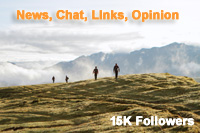ARWC 2015 Brazil - Pantanal
Getting to Grips with Pantanal
Rob Howard / 15.11.2015


On the first night of the race teams trekked cross country to AT2 at Bonfim, a small farmstead near the border with Bolivia and all were suffering after the first day. Most teams had someone who was in difficulty due to the heat at some time or other, and they all just had to manage and recover as best they could, resting, dunking in the water or seeking out a patch of riverside shade.
When he got to the first transition Nathan Fa’avae of Seagate spent a full 10 minutes sitting under a flowing water tap to cool off. The heat and the long paddle has also caused a lot of severe hand blisters among the teams, and with a lot of paddling still to go they are going to be painful and need to be watched for infection
Overnight, the temperature didn’t drop that much and teams were trekking heavily laden with their paddle bags as they made their way to Bonfim. They were bushwhacking some of the time and this slowed their progress even more, while a few were unlucky enough to encounter some aggressive fire ants and were bitten. I spoke to the Ecuadorian team as they prepared their rafts to set off and they said, “It was a terrible day and a terrible night! So hard!”
It was a testing start for all, and as the second day progressed it didn’t get any easier.
At Bonfim they picked up their pack rafts and this was when they discovered if their raft choices were wise ones! The start of the rafting took them along meandering channels and lagoons to the huge Lake Mandiore and the river flow was against them, as was the rising wind much of the time. The good news was that dawn brought some high cloud cover which did at least provide some relief from the direct heat of the sun, at least until mid-afternoon when it began to break up.
There were some options for cross country short-cuts among the meanders and a few teams did try, risking the severity of the bush and undergrowth, and possibly risking their rafts too, if they were not fully deflated. It’s not clear if anyone really gained or lost from these manoeuvres. Columbia Oncosec cut off one big dog-leg, but the boat following them said the bush was dense and they didn’t seem to gain on any of the teams around them.
The pace of the leading teams seemed fairly consistent in the rafts, but those further back were often labouring in rafts that looked like kids beach toys. One Brazilian team had a huge (and heavy) four person raft which they had to paddle in unison, making it hard for anyone to rest,and we saw another team take the wrong channel and disappear up what would prove to be a dead end.
While on the map the channels leading to the lake might look like small backwaters they are still sizeable – the scale of the Pantanal takes some getting used to. So does the wildlife. Columbia reported a Jaguar sighting and Tecnu had a large croc swim right in front of their rafts.
We found Peak Performance on the water and Mikael Lindnord called out that he thought the race would take about 6 days at the rate they were moving. Yogaslackers were progressing more quickly and Jason Magness said, “We are going OK now that no one is sick, but could do without the headwind!”
After searching for and failing to find PC6, which must have been washed away, the teams emerged onto Lake Mandiore and the scale of the terrain became even more apparent – it looked more like an inland sea and the distant hill ranges around the lake shore heightened that impression. The wind created a slight chop once teams were on the open water and they stayed close into shore as they made their way to Morro Comprido – one of those distant hills.
The hills here may not be high (they are up to 1000m) but they are often very steep and trackless – as the teams are finding out climbing to PC7 on the summit of Morro Comprido. There were a couple of suggested routes up, one direct and leading up towards cliffs at the summit which need to be skirted round, and one much longer, but much easier.
All of the leading teams seemed to find their own way up and at one pint there were 4 scattered evenly across the slope and all progressing slowly, while the Czech team opted for the longer route with a gentle ascent.
These were the teams chasing the leaders Seagate, who arrived at AT3 just after 5pm on day two. Their first priority was to get to the water tap to cool off and ease their thirst after bushwhacking back down the hill. Sophie Hart went one better and found the shower to douse herself under.
Nathan Fa’avae told the assembled journalists and cameramen that he couldn’t answer questions as he needed to concentrate on transition. It is a difficult position to be in, arriving as the leaders at the first point in the race where almost all the media and supporters are assembled, tired, stressed and with all the key tasks of transition to complete.
The teams’ transition in front of the farmstead was surrounded by about 50 people (all from the support boat Kalypso) and their composure was remarkable as they set about their usual swift and efficient transition and the opted to sleep, out of the way around the back of the building. This plan didn’t work out, it was just too hot. They took a little more time for Chris Forne to have his hand blisters treated and set off an hour after checking in with Fa’avae saying they hoped it would be cooler in the night.
Behind them there is a close competition between the chasing teams, Haglofs Silva, Godzone Adventure, Tecnu, Merrell Adventure, Blackhill Opavanet and Columbia Oncosec who are all on the mountain making their way across to TA3 as darkness falls.







 SleepMonsters
SleepMonsters



